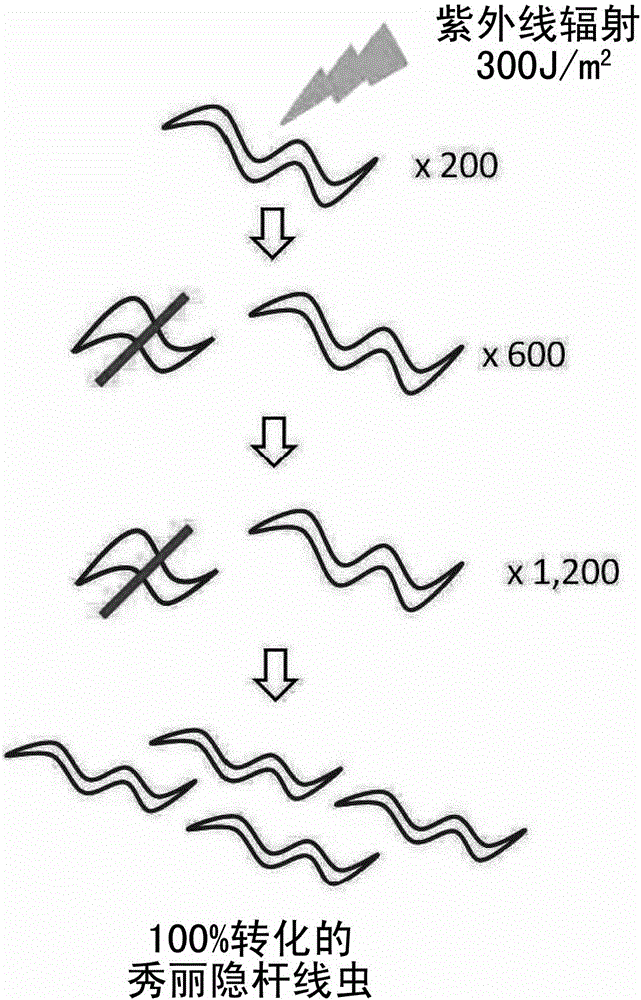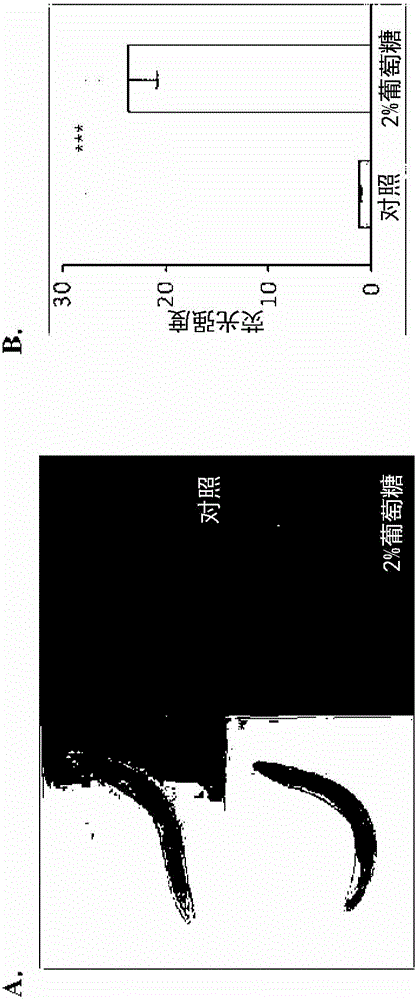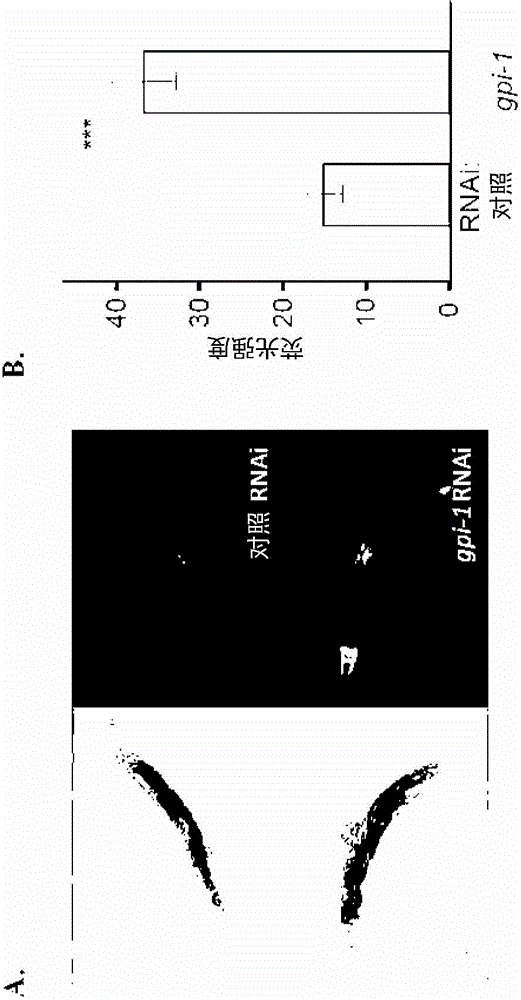Transformed caenorhabditis elegans and method for screening for substances regulating glucose metabolism using same
A Caenorhabditis elegans, sugar metabolism technology, applied in the direction of using vectors to introduce foreign genetic material, biochemical equipment and methods, cells modified by introducing foreign genetic material, etc., to achieve efficient research results
- Summary
- Abstract
- Description
- Claims
- Application Information
AI Technical Summary
Problems solved by technology
Method used
Image
Examples
Embodiment 1
[0037] Example 1. Preparation method of transformed Caenorhabditis elegans-DNA integration
[0038] Since the far-3::GFP DNA inserted into C. elegans is of the type not contained in the chromosome, the far-3::GFP DNA will not be transmitted to the progeny of C. elegans. For experiments using such transformed C. elegans, screening of transformed C. elegans is difficult and the expression of far-3::GFP is not uniform.
[0039] Therefore, in order to obtain stably transformed C. elegans, the DNA was altered by UV irradiation, exogenous far-3::GFP DNA was introduced and integrated into the chromosome. DNA integration by UV integration proceeds with a low probability, so the success rate of obtaining large numbers of C. elegans by UV radiation may increase.
[0040]The transformation of C. elegans can be identified under light microscopy by inserting the gene obtained from the short body mutant (dpy-5) together with far-3::GFP DNA into the long body. During DNA integration, trans...
Embodiment 2
[0042] Example 2. Measurement of fluorescence of far-3::GFP transformed C. elegans in the presence of glucose
[0043] The far-3::GFP-transformed C. elegans prepared in Example 1 was grown in a medium containing 2% glucose, and the fluorescence was measured by the following method.
[0044] Specifically, a drop of 2% agarose was dropped on a glass slide, and another glass slide was covered to spread the agarose thinly therein. Remove the glass slide after the agarose has hardened to form a plate, and place a drop of NaN at a concentration of 50mM 3 Drop onto an agarose plate, and then transfer about 15 C. elegans on it to anesthetize. Carefully cover the coverslip without air bubbles and observe the fluorescence of far-3::GFP by taking images using a fluorescence microscope. A Zeiss Axio Scope A1 was used as a fluorescence microscope. The fluorescence displayed by the whole body of C. elegans was quantitatively analyzed using ImageJ software, and the fluorescence of more th...
Embodiment 3
[0046] Embodiment 3. Use RNAi to find the method for sugar metabolism gene
[0047] The inventors of the present invention used the Julie Ahringer RNAi bacterial library to suppress the expression of specific genes and observed the fluorescence of far-3::GFP. Bacteria obtained from the library were streaked and transferred to LB / ampicillin plates for 12 to 16 hours at 37°C in an incubator. One bacterial colony growing on the plate was selected, transferred to liquid LB / ampicillin medium, and incubated at 37°C for 12 hours in a shaking incubator. After 12 hours, 100 μl of LB / ampicillin medium grown with bacteria was dispensed into NG medium including 2% glucose and ampicillin, and bacteria were cultured at 37° C. for 12 to 16 hours. To induce the reaction, 50 μl of isopropyl-1-thio-β-D-galactopyranoside (IPTG) at a concentration of 100 mM was added to the bacteria, reacted at room temperature for one day, and two adult far-3 ::GFP-transformed Caenorhabditis elegans was transf...
PUM
 Login to View More
Login to View More Abstract
Description
Claims
Application Information
 Login to View More
Login to View More - R&D
- Intellectual Property
- Life Sciences
- Materials
- Tech Scout
- Unparalleled Data Quality
- Higher Quality Content
- 60% Fewer Hallucinations
Browse by: Latest US Patents, China's latest patents, Technical Efficacy Thesaurus, Application Domain, Technology Topic, Popular Technical Reports.
© 2025 PatSnap. All rights reserved.Legal|Privacy policy|Modern Slavery Act Transparency Statement|Sitemap|About US| Contact US: help@patsnap.com



